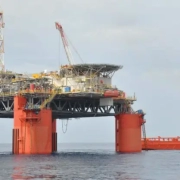⚠️ IMPORTANT LEGAL DISCLAIMER:
The information provided on this page is for general informational purposes only and does not constitute legal, financial, or investment advice. Oil and gas laws, mineral rights regulations, and royalty structures vary significantly by state and jurisdiction. While we strive to provide accurate and up-to-date information, no guarantee is made to that effect, and laws may have changed since publication.
You should consult with a licensed attorney specializing in oil and gas law in your jurisdiction, a qualified financial advisor, or other appropriate professionals before making any decisions based on this material. Neither the author nor the publisher assumes any liability for actions taken in reliance upon the information contained herein.
In the world of oil and gas investments, non operated working interests represent a unique opportunity for investors to participate in energy production without taking on the day-to-day responsibilities of operating wells. This investment structure allows individuals, companies, and institutions to benefit from the revenue generated by oil and gas extraction while leaving the heavy lifting to experienced operators.
Understanding the details of how non operated working interests work is essential for anyone considering this form of energy investment. They can deliver lucrative returns but also carry risks tied to commodity prices, drilling success, and operational costs. A strategic approach is required to maximize profitability while reducing exposure.
This guide explores the fundamentals of non operated working interests, their advantages, potential drawbacks, tax implications, and strategies for successful participation.
Defining Non Operated Working Interests
A working interest refers to a share of ownership in an oil or gas lease that grants the holder rights and responsibilities associated with exploration, drilling, and production. When an investor holds a non operated working interest, they own a percentage of the working interest but do not serve as the operator of the well.
Instead, an established operator manages exploration, drilling, and production activities. The non operating partners contribute capital and share proportionally in both revenues and expenses. This arrangement creates a balance between participation in profits and relief from the operational workload.
Distinguishing Between Different Ownership Structures
Non operated working interests are one type of ownership within the broader landscape of oil and gas rights. It is helpful to distinguish them from other ownership structures:
- Royalty interest: Entitles the owner to a share of production revenue without responsibility for costs.
- Overriding royalty interest: Grants a share of revenue carved out of the working interest but without cost obligations.
- Operating working interest: Gives the holder both ownership and control over drilling, production, and management.
Non operated working interests fall between royalty interests and operating working interests. They involve cost-sharing like an operator but without direct management authority.
Why Investors Choose Non Operated Working Interests
There are many reasons investors find non operated working interests appealing. Some of the most significant include:
- Reduced operational burden: Investors benefit from production revenues without running day-to-day field operations.
- Diversification of portfolio: These interests can complement traditional investments like stocks, bonds, and real estate.
- Direct participation in energy markets: Ownership ties returns directly to commodity prices, creating opportunities during market upswings.
- Tax advantages: Investors may qualify for deductions such as intangible drilling costs and depletion allowances.
- Partnership with experienced operators: By aligning with skilled companies, investors reduce the risk of mismanagement.
Risks Associated with Non Operated Working Interests
Like any investment, non operated working interests come with potential downsides. Awareness of these risks is key to forming a sound strategy:
- Commodity price volatility: Oil and gas prices fluctuate based on supply, demand, and global events.
- Operational dependency: Investors rely on operators for efficiency, safety, and compliance.
- Capital obligations: Non operators must still cover their proportional share of drilling and production costs, whether or not wells are successful.
- Regulatory and environmental risks: Stricter regulations or accidents can lead to unexpected costs.
- Liquidity challenges: Selling a non operated working interest can be more complex than liquidating traditional assets.
Evaluating Potential Investments
Due diligence is the cornerstone of success with non operated working interests. Prospective investors should carefully evaluate several factors before committing capital.
- Operator reputation: The operator’s track record in drilling success, safety, and compliance is critical.
- Geographic region: Some basins and plays have higher production rates and lower costs than others.
- Well performance history: Reviewing nearby well results provides insight into potential returns.
- Cost structure: Transparency in drilling, completion, and operating costs helps investors anticipate expenses.
- Projected production decline curves: Oil and gas wells typically decline over time; modeling this helps forecast revenues.
The Role of Joint Operating Agreements
Participation in a non operated working interest is usually governed by a joint operating agreement. This legal document outlines the rights and obligations of all parties involved. Key provisions include:
- Allocation of revenues and costs
- Decision-making authority of the operator
- Accounting and reporting procedures
- Rights of audit and inspection for non operators
- Dispute resolution mechanisms
A thorough understanding of the joint operating agreement ensures that investors know their responsibilities and protections.
Tax Implications and Benefits
One of the most attractive aspects of non operated working interests is their favorable tax treatment in many jurisdictions. For example:
- Intangible drilling costs: A significant portion of drilling expenses may be deducted in the year incurred.
- Tangible equipment depreciation: Equipment like rigs and pipelines can be depreciated over time.
- Depletion allowance: Investors may deduct a percentage of gross income from the well to account for resource depletion.
These tax benefits can significantly improve the overall return on investment, though rules vary depending on the country and investor status. Consulting with an experienced tax professional is recommended.
Strategies for Maximizing Returns
Investors should adopt deliberate strategies to enhance profitability and manage risks effectively. Some proven approaches include:
- Portfolio diversification: Spreading investments across multiple wells, operators, and basins reduces reliance on any single asset.
- Careful selection of operators: Aligning with experienced and transparent operators improves the likelihood of steady returns.
- Monitoring production performance: Regularly reviewing reports allows investors to track output and anticipate potential issues.
- Hedging commodity exposure: Tools such as futures or options can help manage price volatility.
- Building long-term relationships: Trust and collaboration with operators can lead to access to better projects.
Technology and Innovation in Non Operated Interests
Advances in technology have transformed oil and gas exploration and production. Non operated working interest investors benefit indirectly from these innovations.
- Horizontal drilling and hydraulic fracturing: These methods increase recovery rates and profitability.
- Data analytics and artificial intelligence: Operators use data to optimize drilling, reduce costs, and forecast production.
- Enhanced recovery techniques: Secondary and tertiary recovery methods extend the life of wells.
- Blockchain and digital reporting: Transparency in cost allocation and production data improves investor confidence.
Investors aligned with technologically advanced operators may enjoy stronger returns.
Environmental and Regulatory Considerations
The oil and gas sector operates under increasing scrutiny regarding environmental and social impacts. Non operated working interest investors must remain mindful of:
- Carbon emissions and climate policies
- Water usage and disposal of wastewater
- Local community relations and land use
- Health and safety compliance standards
Investors who prioritize environmental, social, and governance (ESG) factors may find it easier to align with sustainable operators while mitigating reputational risks.
Comparing Non Operated Working Interests to Alternative Investments
It is useful to weigh non operated working interests against other types of energy investments:
- Royalty interests: Lower risk but also lower control over upside potential.
- Energy stocks: More liquid but influenced by market sentiment rather than direct production.
- Master limited partnerships: Offer exposure to infrastructure with tax advantages but may not provide the same level of direct commodity linkage.
Non operated working interests sit at a unique intersection, offering both risks and rewards tied directly to energy production.
Building a Long Term Non Operated Investment Strategy
To succeed with non operated working interests, investors should treat them as part of a larger, long-term portfolio strategy. This means:
- Setting realistic return expectations based on production decline curves
- Allocating only a portion of overall capital to energy investments
- Adjusting positions as commodity cycles evolve
- Maintaining liquidity to cover unexpected capital calls
- Staying informed about regulatory changes and technological advancements
Consistency, patience, and discipline are crucial for achieving sustainable results.
Common Mistakes to Avoid
New investors often make missteps that reduce profitability or increase risk. Common pitfalls include:
- Overconcentration in a single operator or basin
- Ignoring detailed provisions in joint operating agreements
- Failing to anticipate decline rates and ongoing capital requirements
- Underestimating the impact of commodity price swings
- Neglecting due diligence on operator performance
By learning from these mistakes, investors can improve decision-making and avoid costly surprises.
The Future of Non Operated Working Interests
The outlook for non operated working interests is closely tied to global energy trends. Several factors are likely to shape their future:
- Transition to renewable energy: While renewables grow, oil and gas will remain vital for decades, sustaining investment opportunities.
- Global demand growth: Emerging economies continue to drive demand for oil and natural gas.
- Technological evolution: New drilling and recovery methods may enhance well productivity.
- Carbon management initiatives: Increased emphasis on low-carbon operations may affect operator practices.
Investors who remain flexible and adaptive will be well-positioned to capitalize on evolving opportunities.
Non operated working interests offer investors a compelling way to participate directly in oil and gas production without bearing the burdens of operational control. While they provide significant advantages—such as tax benefits, reduced management responsibilities, and portfolio diversification—they also come with risks linked to commodity price volatility, capital obligations, and dependency on operator performance.
A successful strategy for non operated working interests requires careful due diligence, diversification, strong operator selection, and ongoing monitoring. By aligning with trustworthy partners, leveraging technological advancements, and planning for long-term cycles, investors can unlock meaningful returns while navigating the complexities of the energy market.
For those seeking exposure to the oil and gas industry beyond traditional stocks and royalty interests, non operated working interests remain a dynamic and rewarding option when approached with strategy and discipline.











